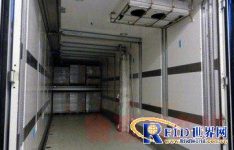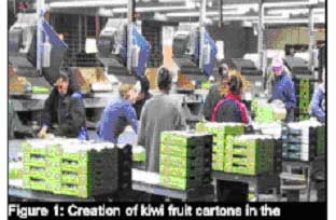
Norway uses RFID sensing technology to track meat shipments
[ad_1]
Geir Vevle, chief technology officer of solution provider Hrafn, said it is common to freeze fish at zero degrees to prevent the growth of bacteria. In theory, this method can also be used for the storage of meat products (thus extending the shelf life of meat for several weeks), but the storage temperature range is too small (the temperature of meat storage must be kept below 0 degrees Celsius, but should be at -1.7 degrees Celsius Above, otherwise it will affect the quality of fresh meat), meat products rarely use this method. In order to ensure that the temperature can always be kept within a reasonable range, the FatlandOLEN slaughterhouse in Norway and the research institute SINTEF cooperated to develop an RFID solution to monitor the temperature of cold meat during transportation from the slaughterhouse to the distribution center.
This project is carried out under the funding of the Norwegian Government Research Council and is part of the Norwegian KMBL?nnsomforedling project (the project is mainly aimed at improving the safety of domestic marine and agricultural products and strengthening the tracking of cold chain and fresh food). Improve the safety of marine and agricultural food.

RFID sensor tags are installed on the ceiling and side walls of the transport truck
The RFID temperature tracking system was developed by Hrafn and includes RFID temperature sensor tags, passive ultra-high frequency (UHF) EPCGen2RFID tags, two-dimensional barcode tags, and software that complies with EPCglobal Information Service Standards (EPCIS). The main purpose of the test is to ensure that the temperature measurement data can be transmitted in real time via RFID and wireless connections. The research results show that the EPCIS system can collect some information, but because radio frequency signals cannot pass through dense meat for transmission, most RFID sensor tags cannot be effectively read.
The slaughtered lamb undergoes low-temperature freezing and is shipped to the Trondheim distribution center. Hrafn is specially equipped with a truck equipped with an RFID reader. The tag information read by the reader in the truck is connected to the EPCIS software via a cellular connection. The RFID reader is connected to a computer equipped with a GPS unit and a GSM system. . The purpose of this test is to test the monitoring capabilities of the sensor tags to ensure that the temperature inside the vehicle is between 0 and -1.7 degrees Celsius during the 14 hours of transportation.
Insert the sensor-labeled probe into the meat to measure its temperature
Hrafn company and SINTEF center spent a total of two months to design the above solutions and test the best position for labeling in the car, and develop the EPCIS data management application. The RFID tags used in the system are provided by CAENRFID company, including two different types of semi-active UHFEPCGen2RFID sensor tags: one is A927Z, including 16 kilobytes of memory (enough to record 8000 temperature readings) temperature recorder; one It is A927ZET, this tag has an external probe, which can be used to measure the temperature inside the meat. The test work began on November 23. One and four A927Z RFID temperature sensor tags were installed on the top and side walls of the carriage to detect the temperature of different positions inside the carriage. In addition, in order to test the temperature inside the meat, four A927ZET sensor probes were inserted into the lamb.
In addition, the system includes a two-dimensional bar code attached to the outside of the sensor label (as shown in the figure above), and the information in the bar code is read by a mobile phone during loading at the slaughterhouse and unloading at the distribution center. The EPCIS system stores the specific time of product delivery and receipt. Researchers chose to use two-dimensional barcodes to record this information, rather than RFID tags, because mobile phones are more convenient and flexible to read two-dimensional barcodes than handheld readers.
The read-write unit called HrafnOnlineContainer consists of a CAENA941 reader and an industrial computer with Owasys GPS and GSM functions, the latter is powered by a car battery. The read-write unit is installed on the floor inside the car, and the reader reads the tag number and corresponding temperature sensor data every 10 minutes. The serial number and sensor data information along with the truck’s GPS coordinates are forwarded to the EPCIS system in the background.
[ad_2]




